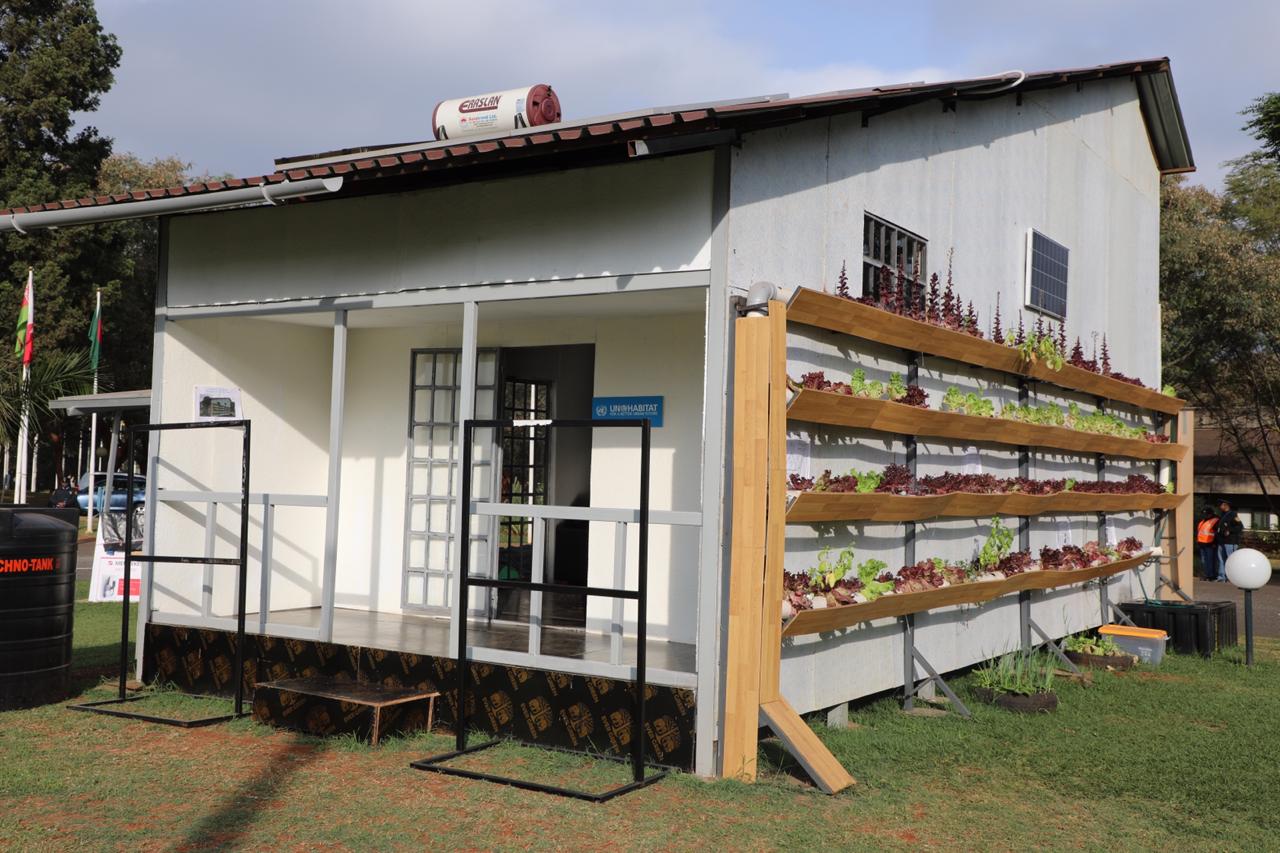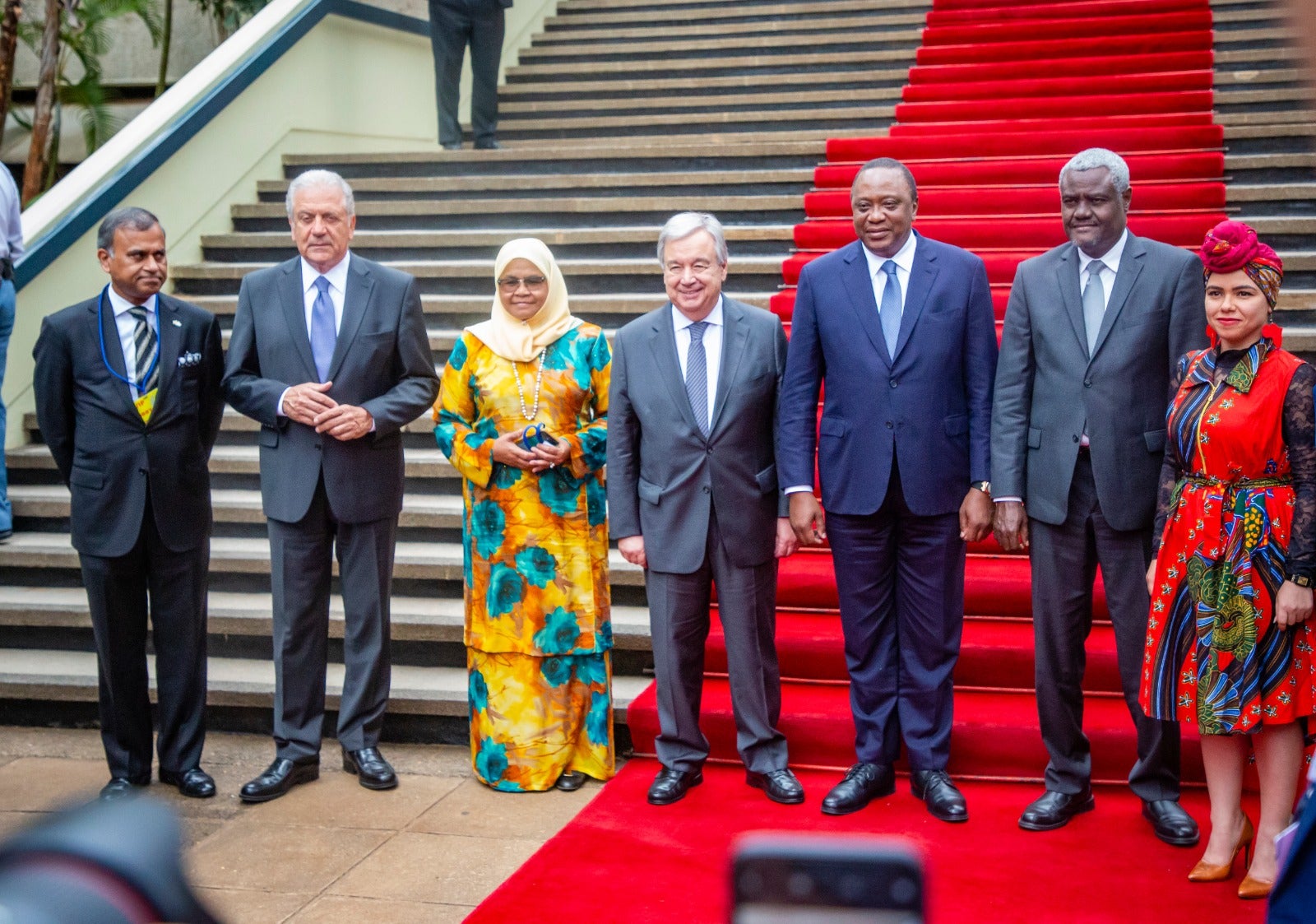Nairobi, 10 July 2019. During his three-day visit to Kenya the United Nations Secretary-General, António Guterres, visited UN-Habitat’s Sustainable Living Unit for the Tropics, otherwise known as the Tiny House for the Tropics.
UN-Habitat’s Tiny House for the Tropics approaches the challenges of sustainable and affordable construction by combining the traditional principles of passive environmental design with technological innovation in waste management, renewable energy and water conservation. The compact design takes up minimal space on the ground resulting in a smaller built up area and lower demand for land to build on while maintaining a spacious feel. It therefore scales down both the physical and ecological footprint of the house, greatly reducing the negative impact of the built form on the environment.
Accompanied by UN-Habitat’s Executive Director, Maimunah Mohd Sharif, the Secretary-General commented on the affordability of the Tiny House, including the use of materials and how waste management is regulated. He noted that: “the fact that we are developing an affordable house, that is at the same time a green house in order to be able to be used in the community with affordable prices – all these are ways in which, even if they seem to be quite simple, quite easy, these are ways to contribute to what is our major battle today in the world, to defeat climate change, to save the planet.”


The Tiny House for the Tropics is built on four principles: (1) low carbon building strategies; (2) minimum footprint and optimization on indoor spaces; (3) use of locally availability building material including agricultural waste; and (4) local manufacturing and job creation.
Speaking at the African Regional High-Level Conference on Counter Terrorism and Prevention of Violent Extremism Conducive to Terrorism, the Secretary-General underlined the role of local government, women, young people and political commitment in approaches to preventing and countering terrorism at the grassroots level: “Yesterday I saw how a community [Kamukunji, Nairobi], ravaged by violence and radicalization, can turn things around. It took commitment from community leaders, young people, local government and beyond, but it was possible. It took years but it was possible. Most importantly, it took political commitment”.

The President of Kenya, H.E. Uhuru Kenyatta, together with African Union Chairperson, Moussa Faki Mahamat also spoke at the opening of the Conference. He called on the African Union “…to generate a powerful political consensus for confronting and defeating terrorism and all other forms of violent extremism conducive to terrorism”.
During the Secretary-General’s visit to Kamukunji in Nairobi County, he stressed that inclusive and cohesive communities are essential to tackle violent extremism and terrorism. He praised the community for using education to improve their job prospects and turn their backs on violent extremism.
Cities and human settlements are often targets of violent extremist acts. They also play a central role in addressing their root causes. UN-Habitat, guided by the New Urban Agenda, clearly calls for crime prevention integration to urban strategies and initiatives; its Strategic Plan 2020-2025 which places effective urban crisis prevention and response, particularly through enhanced social integration and inclusive communities and Sustainable Development Goal 11 – provide clear linkages to providing solutions to extremism and terrorism in cities and human settlements.

Article: Taina Christiansen
Video: UNEP